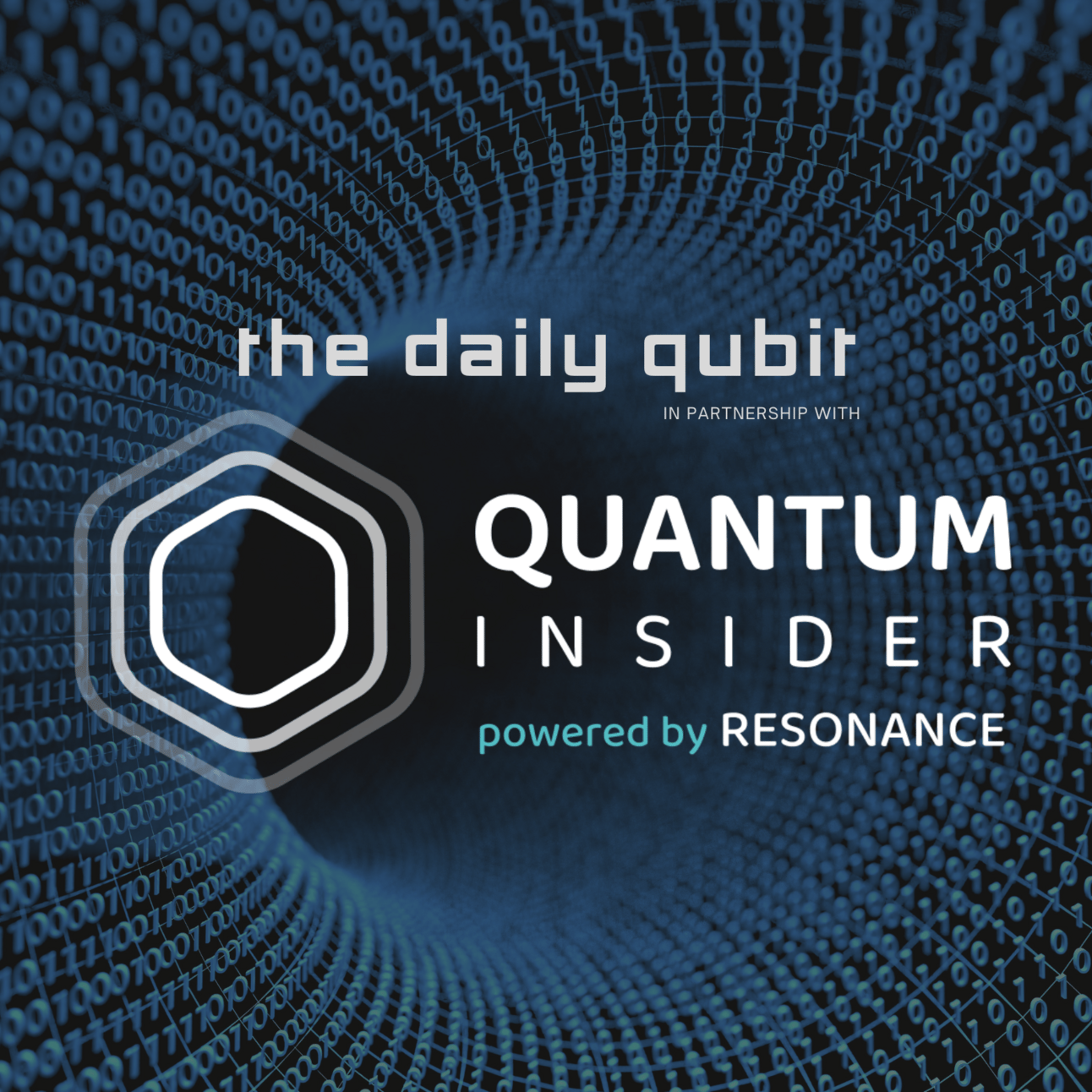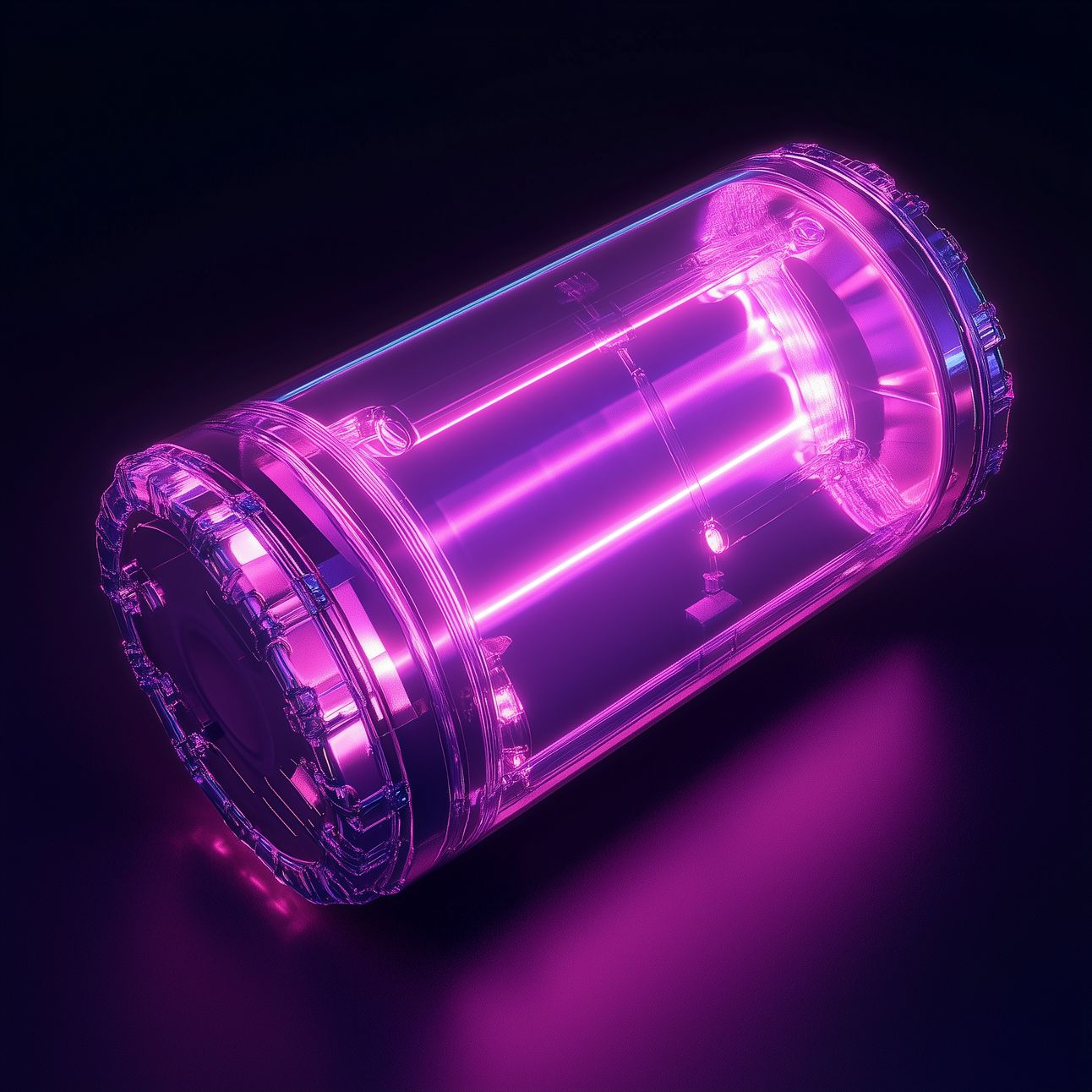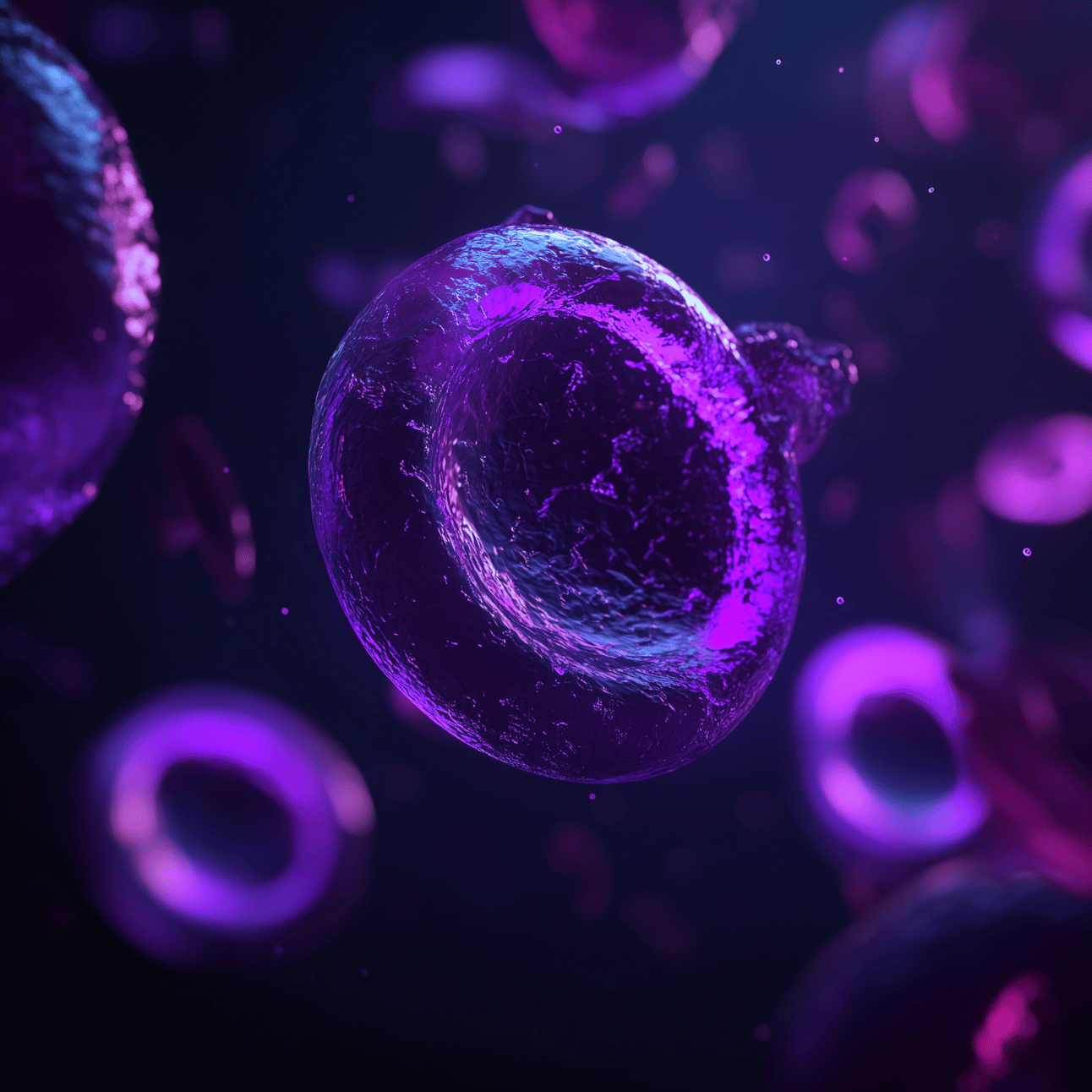- The Daily Qubit
- Posts
- The Daily Qubit
The Daily Qubit
⚛️ VQCs are used to design peptides that bind with microplastics, a quantum workflow simulates the oxygen reduction reaction on platinum and platinum-cobalt catalysts, QML is used for predicting diabetes, and more.

Welcome to The Daily Qubit!
Get the latest in top quantum news and research Monday through Friday, summarized for quick reading so you stay informed without missing a qubit.
Have questions, feedback, or ideas? Fill out the survey at the end of the issue or email me directly at [email protected].
And remember—friends don’t let friends miss out on the quantum era. If you enjoy The Daily Qubit, pass it along to others who’d appreciate it too.
Happy reading and onward!
Cierra
Today’s issue includes:
A framework of variational quantum circuits combined with a variational autoencoder network is used to design peptides with high affinity for binding microplastics like polyethylene terephthalate (PET).
A quantum workflow is used to simulate the oxygen reduction reaction on platinum and platinum-cobalt catalysts, a bottleneck in proton-exchange membrane fuel cells.
QML is used for predicting diabetes based on the PIMA Indian Diabetes Dataset to improve prediction accuracy and computational efficiency, particularly in datasets with imbalanced classes.
QUANTUM APPLICATION HEADLINES

Image: by Midjourney for The Daily Qubit
APPLICATION: Researchers from ETH Zurich, Cornell, and NCSU developed a framework that uses variational quantum circuits combined with a variational autoencoder network to design peptides with high affinity for binding microplastics like polyethylene terephthalate (PET) for environmental applications, such as detecting and degrading microplastic pollution.
SIGNIFICANCE: Microplastic pollution is a notable environmental concern, with particles found in marine and terrestrial ecosystems impacting health and biodiversity. The ability of peptides to bind to plastics like PET may provide a method for remediation strategies. However, designing such peptides is computationally challenging due to the large chemical space and lack of reference data. This framework leans on quantum computing's ability to process high-dimensional data efficiently, enabling the design of peptides tailored for specific properties like strong plastic binding and water solubility, potentially leading to a solution for microplastic pollution.
HOW: A VAE is used to compress 12-amino-acid peptide sequences into a latent 16-dimensional space. VQCs are then used to predict and optimize binding affinity within this latent space. The trained models use gradient descent to explore and refine peptide designs, minimizing the predicted affinity score, which corresponds to higher binding affinity. Decoded sequences are validated through molecular dynamics simulations, ensuring strong and stable binding interactions with PET while maintaining water solubility.
BY THE NUMBERS:
12 amino acids — Peptides designed by the framework consist of 12 residues, balancing computational feasibility and practical applicability in synthesis and remediation.
−63.5 kcal/mol — Best affinity score achieved for PET-binding peptides, indicating strong interactions compared to conventional methods.
350,000 peptides — Dataset size used for training the framework, ensuring diversity in peptide generation and optimization.

Image: by Midjourney for The Daily Qubit
APPLICATION: A team from Quantinuum, Fujitsu Research of Europe, BMW, Airbus, and Aerostack have developed a workflow to simulate the oxygen reduction reaction on platinum and platinum-cobalt catalysts, a bottleneck in proton-exchange membrane fuel cells.
SIGNIFICANCE: Fuel cells, especially proton-exchange membrane fuel cells, are prominent hydrogen-based clean energy solutions because they can efficiently convert chemical energy into electricity. However, one challenge in making these systems more effective is in the oxygen reduction reaction—a chemical process where oxygen molecules are converted into water. This step slows down the energy conversion because it requires a lot of energy to get started (kinetic overpotential) and involves many intermediate reactions that are hard to control. Platinum-based materials are currently the best catalysts for speeding up the ORR, but improving their performance requires detailed modeling of how electrons interact within these materials. Traditional computational methods, such as density functional theory, struggle to fully capture these interactions because they involve complex quantum effects that are difficult to calculate. Quantum computing is particularly suited for problems that involve the intricate behavior of electrons. By pairing quantum with classical methods, researchers can better understand how these catalysts work, design more efficient materials, and make hydrogen fuel cells more practical.
HOW: The hybrid workflow integrates ADAPT-VQE to compute the electronic states of small active spaces representing catalyst-adsorbate interactions, coupled with classical perturbation methods for dynamic correlation energy. For pure platinum, the study modeled oxygen dissociation reactions, identifying key adsorption sites and energy profiles. Extending the approach to platinum-cobalt catalysts, the workflow addressed the additional complexity introduced by cobalt’s magnetic properties, demonstrating the scalability of the method for more intricate systems.
BY THE NUMBERS
0.69 eV activation energy — Calculated for oxygen dissociation on platinum, closely matching literature values, validating the method’s accuracy.
8 qubits — Required for the platinum-cobalt simulation, highlighting the current limitations and potential scalability of quantum devices.
25 atom surface — Used in the platinum-cobalt model, demonstrating the workflow’s ability to handle realistic catalytic systems.

Image: by Midjourney for The Daily Qubit
APPLICATION: A study from Jawaharlal Nehru University explores QML for predicting diabetes based on the PIMA Indian Diabetes Dataset to improve prediction accuracy and computational efficiency, particularly in datasets with imbalanced classes.
SIGNIFICANCE: Diabetes is a major global health issue, with the number of people affected steadily increasing. This creates an urgent need for better ways to predict and diagnose the disease early. Traditional machine learning methods, such as logistic regression and support vector machines, are commonly used for such tasks to analyze data and identify patterns. However, they struggle with large or complex datasets. QML may be able to handle complex datasets more effectively than traditional methods. One example from this study is the quantum support vector classifier, which showed strong potential for analyzing medical data. It could detect subtle patterns and connections in diabetes-related data, which might improve early detection and help create personalized treatment plans.
HOW: The research applies synthetic minority over-sampling technique to address dataset imbalances, followed by principal component analysis for dimensionality reduction. Classical models like LR and SVM, alongside quantum algorithms like QSVC and VQC, are trained and evaluated using accuracy, precision, recall, and F1 score metrics. QSVC uses quantum kernel functions to map input data into higher-dimensional feature spaces, enhancing its classification capabilities. Performance metrics reveal QSVC's improvement over VQC, with the latter requiring further optimization for practical use in healthcare predictions.
BY THE NUMBERS:
0.76 accuracy — SVM achieved the highest accuracy among all tested models, establishing it as the classical benchmark.
0.74 accuracy — QSVC closely follows, showcasing its potential as a competitive quantum alternative.
25% data imbalance corrected — Using SMOTE improved model reliability by addressing the significant imbalance in diabetes cases.
Your daily AI dose
Mindstream is your one-stop shop for all things AI.
How good are we? Well, we become only the second ever newsletter (after the Hustle) to be acquired by HubSpot. Our small team of writers works hard to put out the most enjoyable and informative newsletter on AI around.
It’s completely free, and you’ll get a bunch of free AI resources when you subscribe.
RESEARCH HIGHLIGHTS
🖥️ A team from ETH Zurich and Purdue University propose the "Hyperbolic Quantum Processor," a silicon-based optoelectronic platform using hyperbolic materials like hexagonal boron nitride to achieve long-range entanglement between qubits without requiring extreme cooling. According to the study, by exploiting the "Hyperbolic Super-Resonance" phenomenon, it enables high quantum gate fidelities exceeding 99%. This design has the potential to make quantum computation more accessible by using existing semiconductor fabrication techniques.
🧫 Scientists from Tohoku University, RIKEN, and others investigate the real-time dynamics of quantum cellular automata charge transitions in triple quantum dots, focusing on the coordinated movement of electrons due to Coulomb interactions. Using radio-frequency reflectometry, researchers observed these transitions and analyzed their dependence on gate voltages, revealing that QCA processes can be modulated by external control. These findings provide fundamental insights into electron transport dynamics.
🤖 Researchers form the Henan Key Laboratory of Quantum Information and Cryptography introduce Qtailor, a reinforcement learning-based framework for dynamically tailoring quantum processor topologies to specific algorithms, significantly reducing quantum circuit depth. This approach outperforms traditional fixed-topology mapping methods, achieving circuit depth reductions of up to 46%, with pronounced benefits as circuit size increases.
NEWS QUICK BYTES
🪄 Researchers have discovered that the Large Hadron Collider regularly produces a quantum property known as "magic" when it generates top quarks, the heaviest known fundamental particles. Magic measures the complexity of quantum systems and their suitability for quantum computing, offering insights into creating more robust quantum states for powerful computations.
🏆️ Two teams have been awarded the Physics World 2024 Breakthrough of the Year for advancements in quantum error correction. Mikhail Lukin, Dolev Bluvstein, and collaborators created a 48-logical-qubit processor using neutral atom arrays, enabling real-time error correction and advancing quantum operation scaling. Hartmut Neven and the Google Quantum AI team demonstrated below-threshold quantum error correction on the Willow superconducting chip, showing exponential error suppression as physical qubits increased.
🤝 Nord Quantique and AlgoLab have launched a year-long collaboration to combine Nord Quantique’s bosonic code-based quantum hardware with advanced algorithms tailored for optimization and quantum machine learning. By leveraging the Hilbert space of quantum oscillators, Nord Quantique’s bosonic codes enable efficient error correction with fewer physical qubits, significantly reducing hardware requirements compared to traditional methods.
QUANTUM MEDIA
WATCH
Jaume Gomis from the Perimeter Institute explores quantum field theory through the lens of "defects," hidden structures that reveal deeper layers of reality beyond ordinary observables.
THAT’S A WRAP.
How many qubits was today's newsletter? |


